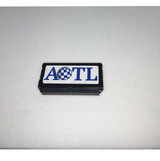


-
Description
EZ-232 RS-232 Serial Interface
The EZ-232 Interface, designed by Jim Brain, provides a low-speed serial port for Commodore 8-bit computers. It can operate at speeds of up to 2400bps, when configured as a standard interface, and at speeds of up to 9600bps, when configured as a UP9600 interface.
Now the EZ232 by DMackey828 has TX and RX LED's on them so you know if something is actually working or not. These also help if you happen to have a bad cable.
No other RS232 device has the LED's
The jumpers and switches on this board work as follows.
The jumpers on the board are used to change between 2400bps and 9600bps modes. As the board layout shows, if you short JP1, JP2 and Pins 2-3 of JP3, it’ll be configured as a UP9600 interface. Novaterm 9.6 has a serial driver for this interface, and it will allow you to communicate up to 9600BPS on the user port. I usually leave mine jumpered this way, as it still seems to work fine at lower speeds, and with Q-Link at 1200bps. Shorting pins 1-2 of JP3, and unjumpering JP1 and JP2 return it to a standard 2400bps interface.
Note: Leave the EZ-232 configured as a standard RS-232 interface when using with a Commodore
128. The C128 is already capable of 9600BPS on the User Port with a standard RS-232 interface.
Configuring it as a UP9600 interface will cause the C-128 to lock up
Switch S4 will invert the control lines (DCD and DTR). This is used if you wish to have an inverted carrier detect signal used. Normally this switch is in the off position, towards the DB9.
Switch S5 is the RTS/CTS loopback. (May be 1 or 2 switches.) If you’re using software that requires RTS/CTS handshaking, but the device you’re connected to doesn’t provide it, then flip this switch to the on position. Normally, you’ll leave it off, towards the DB9.
-
Reviews
Reviews
Be the first to
Leave a Review
-
Details
Details
Current Stock:SKU: A081Width: 6.00 (in)Height: 9.00 (in)Depth: 0.50 (in)




